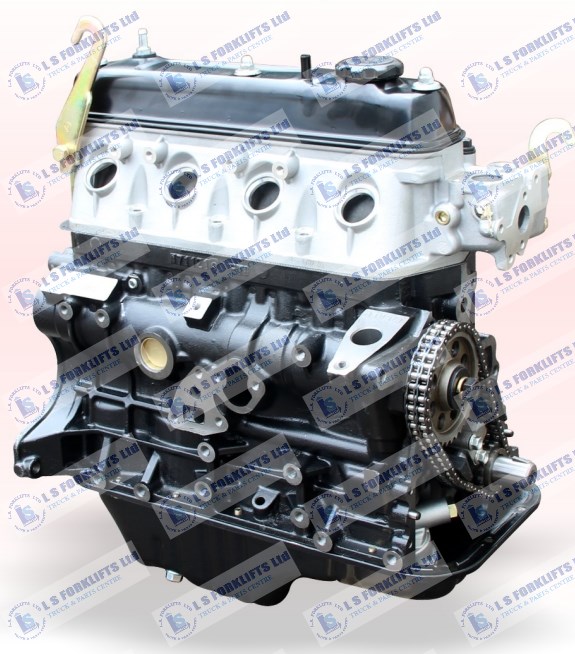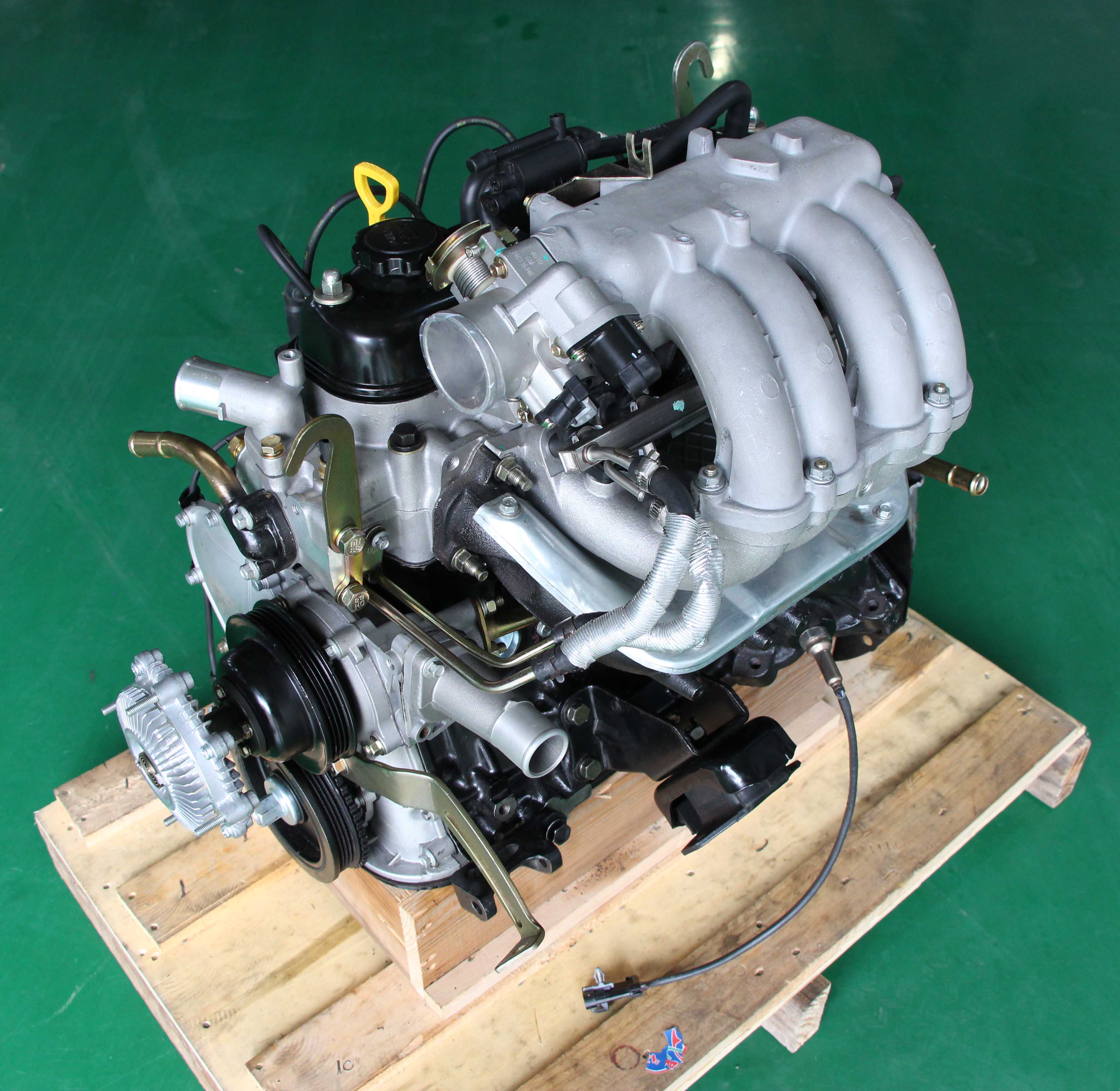A Complete Guide to Understanding the 4Y Engine’s Performance Capabilities
A Complete Guide to Understanding the 4Y Engine’s Performance Capabilities
Blog Article
The Ultimate Guide to the Engine: Trick Insights for every single Automobile Enthusiast
Recognizing the engine is basic for any automotive enthusiast, as it functions as the heart of the vehicle and determines its performance. This overview supplies a detailed exam of engine anatomy, kinds, and the auto mechanics behind their operation, consisting of the ingenious innovations that are reshaping the vehicle landscape. It underscores the crucial nature of upkeep practices that can considerably impact an engine's life-span. The intricacies of engine characteristics and the newest advancements in technology present inquiries that warrant further expedition. What might these understandings disclose about the future of vehicle design?
Composition of an Engine
Understanding the makeup of an engine is essential for any kind of vehicle fanatic seeking to dig deeper into automotive auto mechanics. An inner combustion engine mostly contains several crucial parts that work in unison to convert gas right into mechanical power.
At the heart of this system lies the cyndrical tube block, which houses the cyndrical tubes where combustion happens. Piston motion within these cylinders is promoted by the crankshaft, which equates straight activity into rotational power. In addition, the camshaft plays an important function in controlling the opening and closing of the engine's shutoffs, ensuring proper air-fuel mixture intake and exhaust gas expulsion.
Other important components include the fuel system, which supplies the engine with the needed fuel, and the ignition system, responsible for initiating combustion - 4y engine. The cooling and lubrication systems are likewise important, preserving optimum operating temperatures and decreasing rubbing, specifically
Engine Kinds and Configurations
A diverse variety of engine kinds and configurations exists, each offering special advantages and drawbacks customized to different driving demands and preferences. One of the most typical engine types consist of inline, V, level, and rotating setups.
Inline engines, including cylinders prepared in a single line, are recognized for their simplicity and effectiveness. They are commonly discovered in portable vehicles, providing a balance of power and economic climate. V engines, defined by their two banks of cyndrical tubes organized in a V form, give higher performance and smoother operation, making them prominent in sporting activities and luxury automobiles.
Level engines, or boxer engines, have horizontally opposed cylinders, which add to a reduced center of mass, boosting vehicle security. These are frequently seen in brands like Subaru and Porsche.
Rotary engines, although much less typical, utilize a special layout with a triangular rotor and offer high power-to-weight ratios. They master lightweight and compact applications, primarily seen in Mazda vehicles.
Each engine type offers certain efficiency attributes, weight circulations, and gas performances, ensuring that automobile enthusiasts can select the ideal engine setup to match their driving design and automobile needs.

Just How Engines Function
Engines, regardless of their type or arrangement, operate on fundamental concepts that govern their efficiency and performance. At their core, engines convert fuel into power through a collection of controlled explosions or compressions. This procedure usually includes 4 main strokes: consumption, power, compression, and exhaust.
Throughout the consumption stroke, the engine attracts a mix of air and fuel. The compression stroke adheres to, where the mix is pressed in the cyndrical tube, increasing its temperature level and pressure. In the power stroke, a spark ignites the pressed blend (in fuel engines) or the mixture ignites automatically (in diesel motor), resulting in a quick expansion of gases that pushes the piston down. Finally, the exhaust stroke expels the invested gases from the cyndrical tube.
The performance of an engine is influenced by various aspects, consisting of his response the design of the burning chamber, the kind of gas used, and the accuracy of the engine's components. Comprehending these fundamental concepts is important for cars and truck fanatics who seek to appreciate the intricate mechanics behind their cars, as well as for those intending to boost efficiency via alterations and tuning.
Developments in Engine Technology
Over the last few years, developments in engine modern technology have actually substantially changed the vehicle landscape, enhancing both efficiency and ecological sustainability. One of one of the most noteworthy technologies is the growth of turbocharging and supercharging, which enables smaller sized engines to create greater power results without compromising gas effectiveness. This has actually brought about a surge in the appeal of scaled down engines, providing producers with the capability to meet rigorous emissions regulations while maintaining efficiency requirements.
Furthermore, hybrid and electric powertrains are improving the engine paradigm. Hybrid systems integrate inner combustion engines with electric motors, enhancing fuel consumption and decreasing exhausts. Completely electrical cars (EVs) eliminate the combustion engine completely, relying upon innovative battery modern technology to look at this web-site deliver immediate torque and impressive acceleration.
In addition, the integration of expert system and equipment discovering in engine management systems enables for real-time optimization of efficiency specifications, improving efficiency and responsiveness. Advancements such as variable shutoff timing and straight gas injection further refine combustion procedures, taking full advantage of power result while minimizing waste.
As the vehicle industry remains to develop, these technologies in engine modern technology will play a critical function in shaping the future of movement, prioritizing both performance and sustainability.
Upkeep Tips for Fanatics
Maintaining an engine is as important as the technologies that enhance its performance. Routine maintenance not just lengthens the life of your engine yet additionally makes certain ideal efficiency.
Check and replace air filters regularly to make sure proper airflow, which is essential for burning effectiveness. A clogged air filter can result in reduced efficiency and enhanced gas intake. Similarly, keep an eye on the coolant degrees to prevent overheating, and change coolant according to the solution timetable.

Final Thought
To conclude, a detailed understanding of engine composition, kinds, and auto mechanics is important for automotive lovers. The expedition of technologies such as turbocharging and hybrid systems highlights the innovations in efficiency and efficiency. Moreover, normal maintenance techniques, consisting of oil adjustments and air filter checks, are critical for ensuring optimum engine performance and durability. Proficiency of these ideas promotes a much deeper admiration for engine characteristics and improves the general driving experience.

Engines, regardless of their kind or arrangement, run on basic concepts that govern their efficiency and performance. In the power stroke, a stimulate fires up the pressed mix (in gasoline engines) or the blend stirs up automatically (in diesel engines), resulting in a rapid development of gases that pushes the piston down.In recent years, improvements in engine her explanation modern technology have considerably changed the vehicle landscape, enhancing both performance and environmental sustainability.
Report this page